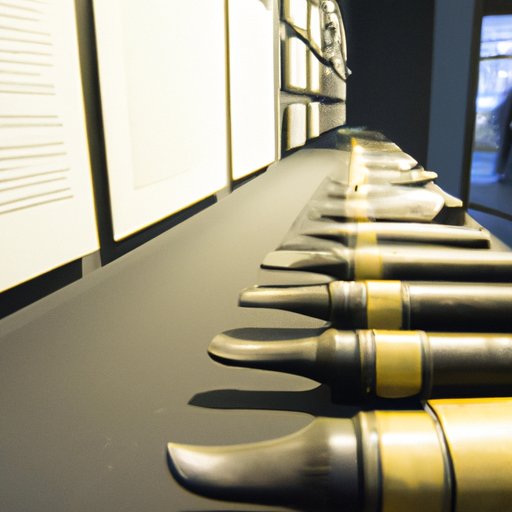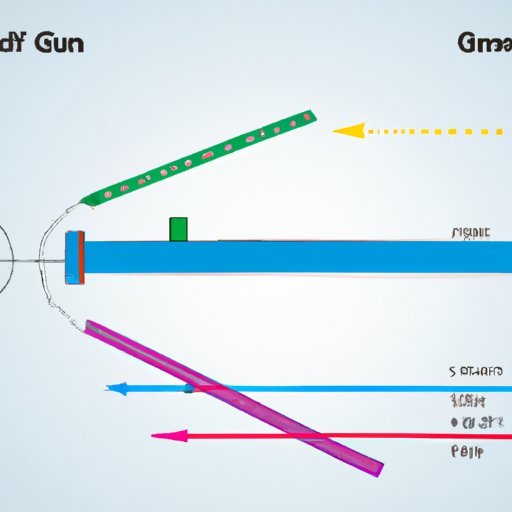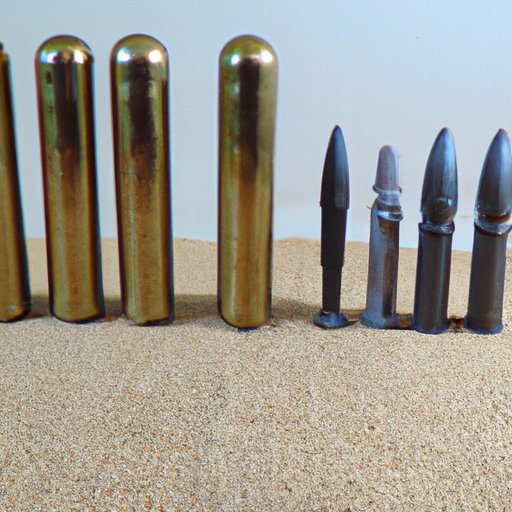Introduction
Bullets are a familiar part of our lives, whether through news reports or movies. But what exactly is bullet speed? How is it measured, and what factors influence it? This article will explore the science and history behind bullet speed, helping you understand the physics of its motion and the various factors that can affect it.
Exploring the Physics of Bullet Speed
The speed of a bullet is determined by the application of Newton’s three laws of motion. According to the first law, an object in motion remains in motion unless acted upon by an external force. The second law states that the force applied to an object is equal to its mass multiplied by its acceleration. Finally, the third law states that for every action there is an equal and opposite reaction.
These laws apply to bullets as well. When a bullet is fired from a gun, the expanding gases created by the burning gunpowder push against the bullet, accelerating it down the barrel. This is known as conservation of momentum. As the bullet moves, the force of air resistance works to slow it down.
Measuring the Velocity of Bullets
There are several ways to measure the velocity of bullets. One method is to use a chronograph, which measures the time it takes for a bullet to pass through two light sensors. By measuring the time and taking into account the distance between the sensors, the velocity of the bullet can be calculated.
Another method is to use a radar gun. Radar guns use microwaves to measure the speed of objects moving past them. The microwaves bounce off the object and are reflected back to the radar gun, allowing the speed of the object to be calculated. This method is commonly used by police officers to measure the speed of cars.
Finally, Doppler radar can also be used to measure the speed of bullets. This type of radar measures the frequency of the waves reflected back from the bullet, which can then be used to calculate its speed.
Factors That Affect How Fast a Bullet Travels
Several factors can influence the speed of a bullet. One factor is the caliber of the gun, which is the diameter of the bullet. Larger calibers typically produce faster bullets, as they have more mass and energy behind them. The length of the gun barrel can also affect the speed of a bullet, as longer barrels give the bullet more time to accelerate.
The type of ammunition used can also affect the speed of a bullet. Lead bullets tend to travel slower than copper or jacketed bullets, while aluminum bullets can reach higher speeds. Finally, atmospheric conditions such as temperature and humidity can affect the speed of a bullet, as thicker air can create more air resistance.

A Look at the History of Firearms and Bullet Speed
Firearms have been around for centuries, with the earliest forms appearing in the 14th century. Early firearms were muzzle-loaded and had relatively low velocities. It wasn’t until the 19th century that high-velocity firearms began to appear, thanks to advances in metallurgy and the invention of smokeless gunpowder.
Since then, the development of firearms has been driven by the desire to increase the speed of bullets. Modern firearms can produce bullets with velocities of up to 4,000 feet per second. This is much faster than the speed of sound, which is approximately 1,100 feet per second.

Examining the Relationship Between Gun Barrel Length and Bullet Speed
The length of a gun barrel affects the speed of a bullet in two ways. Longer barrels give the bullet more time to accelerate, thus increasing its speed. On the other hand, shorter barrels reduce the amount of time the bullet has to accelerate, resulting in a lower speed.
Longer barrels also offer greater accuracy and performance, as the bullet has more time to stabilize before leaving the barrel. Shorter barrels are less accurate, but they are easier to carry and require less maintenance. The ideal barrel length for a given firearm depends on the type of ammunition being used and the intended purpose of the gun.

Comparing Different Types of Bullets and Their Travel Speeds
Different types of bullets can have different travel speeds. Lead bullets are the most common type of bullet and are generally the slowest, with velocities of around 2,000 to 3,000 feet per second. Copper bullets are slightly faster, with velocities of up to 3,500 feet per second. Jacketed bullets can reach velocities of up to 4,000 feet per second, while aluminum bullets are the fastest, with velocities of up to 5,000 feet per second.
The type of bullet used can also affect the accuracy and performance of the firearm. Lead bullets tend to be the least accurate, while copper and jacketed bullets offer better accuracy. Aluminum bullets are the most accurate, but they are also the most expensive.
Conclusion
This article has explored the science and history behind bullet speed. We’ve looked at Newton’s three laws of motion and how they apply to bullets, as well as the various methods used to measure their velocity. We’ve also examined the factors that can affect bullet speed, including the caliber of the gun, the length of the barrel, the type of ammunition used, and atmospheric conditions.
Finally, we’ve compared the different types of bullets available and looked at the relationship between gun barrel length and bullet speed. With this information, you should now have a better understanding of how bullets move and the factors that influence their speed.
(Note: Is this article not meeting your expectations? Do you have knowledge or insights to share? Unlock new opportunities and expand your reach by joining our authors team. Click Registration to join us and share your expertise with our readers.)
